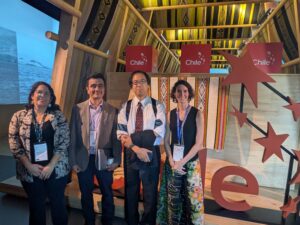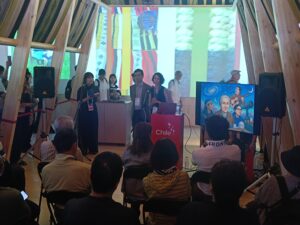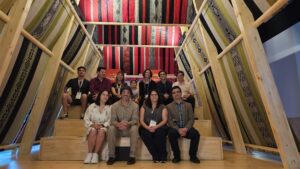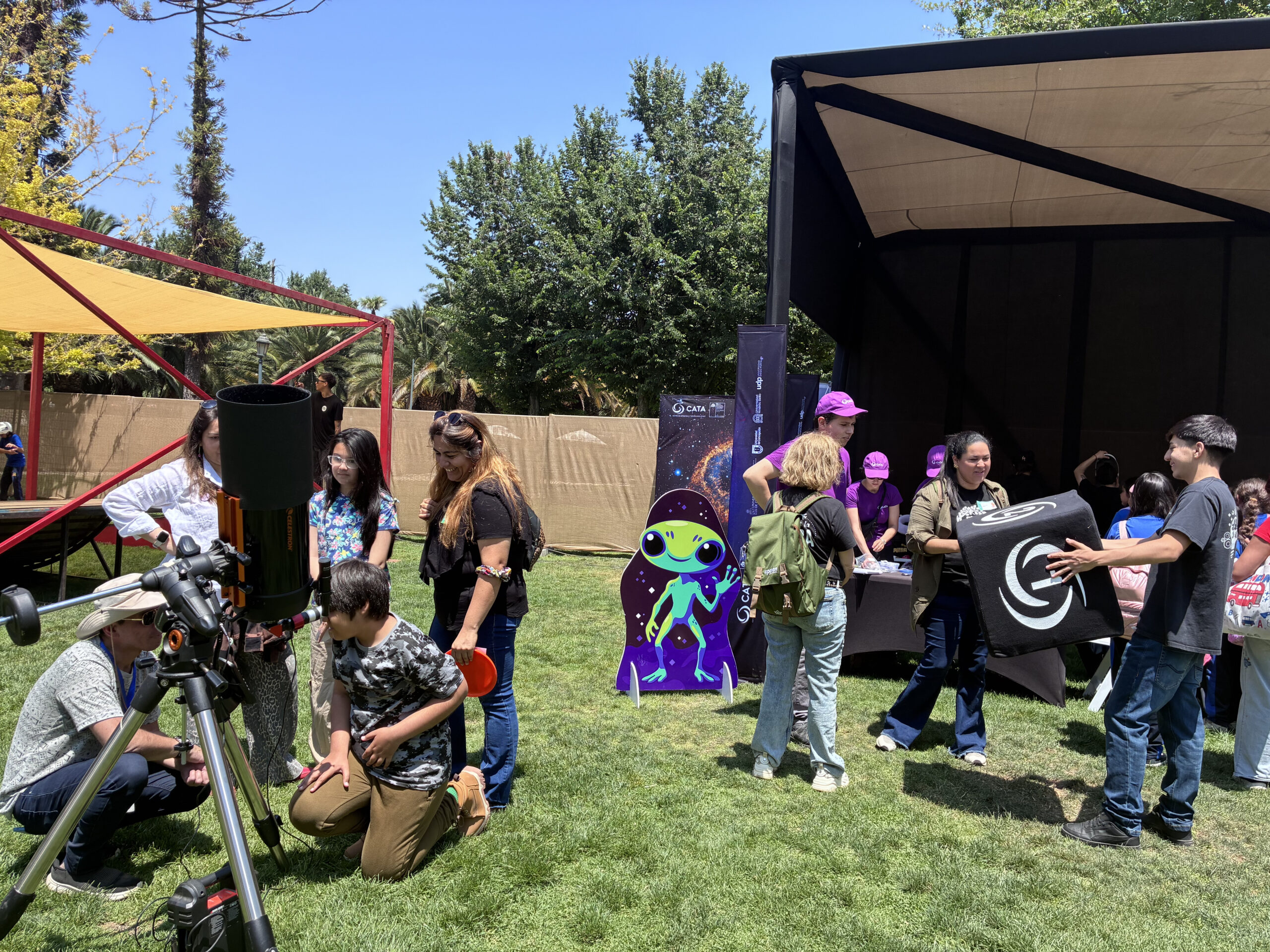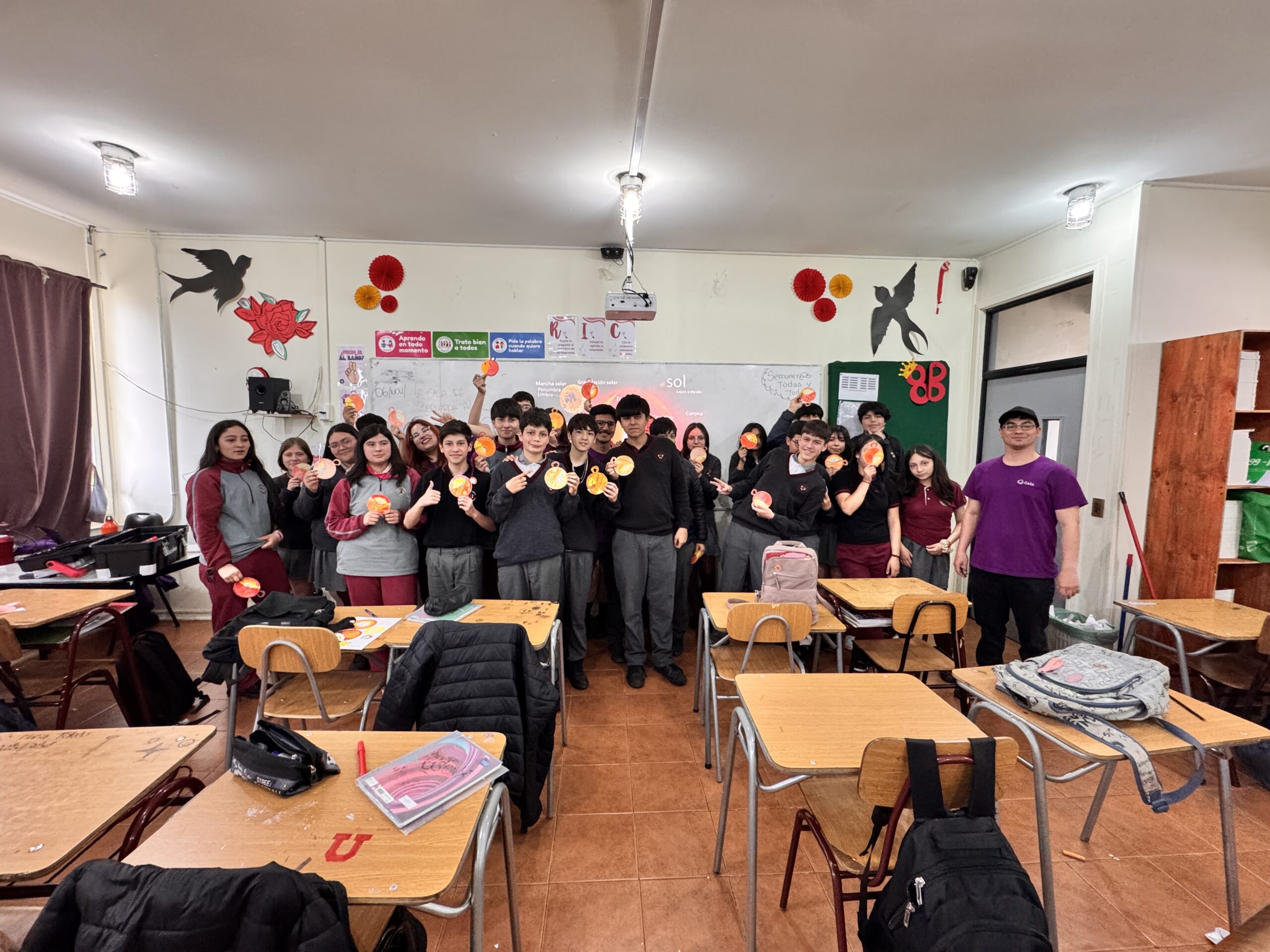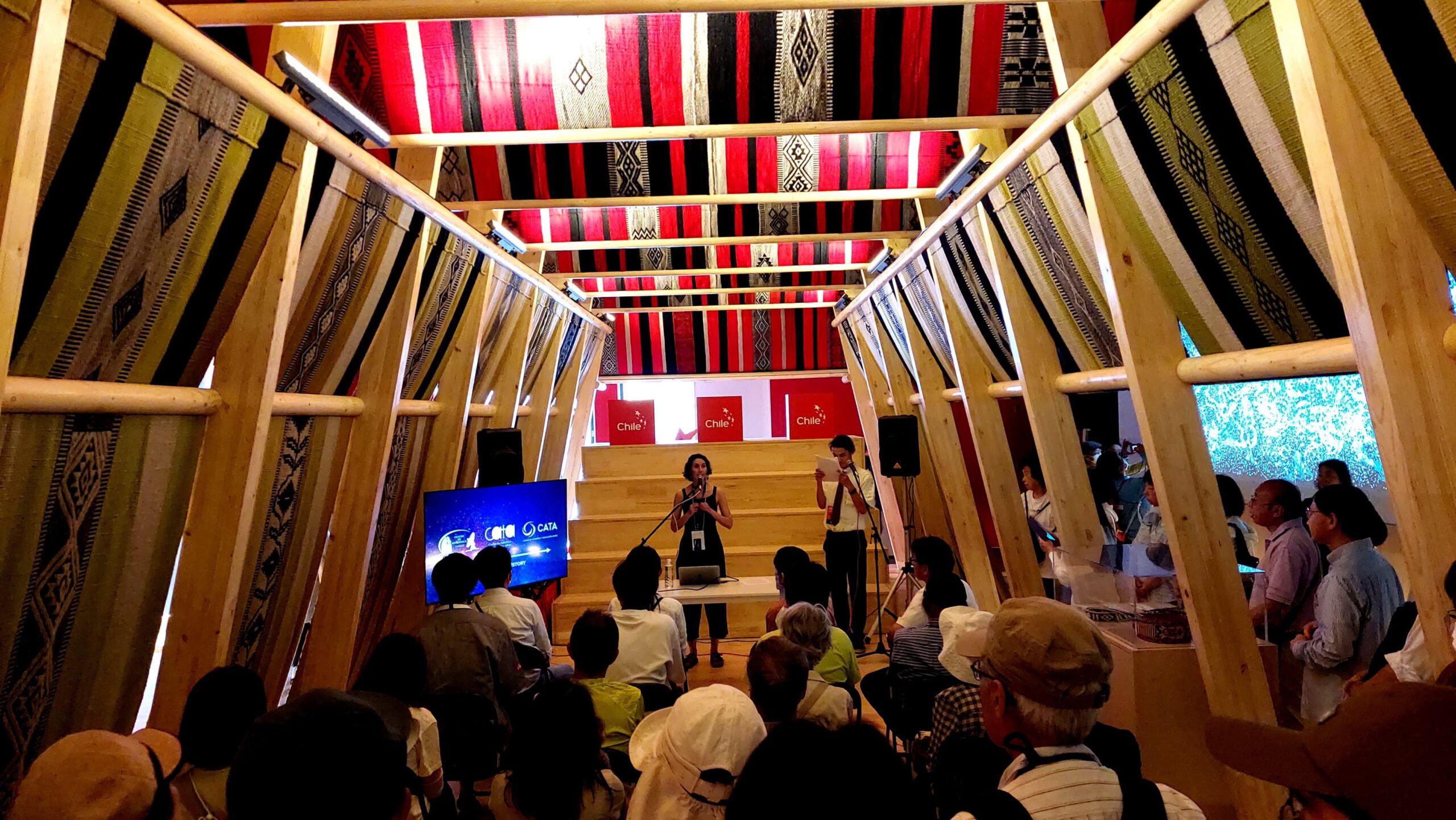
CATA highlights its role in technology transfer during the Universal Expo Osaka 2025
From Chile to Japan: the road from science to applied technology.
During the Infinite Innovation Week, held in the Chile Pavilion at the Osaka 2025 World Expo, the Center for Astrophysics and Related Technologies (CATA) presented its experience in innovation and technology transfer, positioning Chile as a relevant actor in the development of technological solutions applied to industry and society.
Elise Servajean, PhD in Astronomy and General Manager of CATA, was one of the key speakers in this thematic axis, presenting her talk “Beyond the telescope. Chilean innovation with global impact”, together with Franco Curotto, Project Manager and Head of the Center’s Laboratory. The presentation sought to make visible the work of the Center in frontier research applied to innovation and how Chile has managed to consolidate itself not only as a world astronomical capital thanks to the quality of its skies and its scientific infrastructure, but also as an emerging pole of technology transfer derived from astronomy.
“We are not only the world’s astronomical capital because we have the best telescopes, but also because we take this scientific knowledge and transform it into technological solutions that are now reaching industries apparently far from astronomy,” explained the manager.
Technology transfer with CATA seal
One of the distinctive elements of CATA compared to other astronomical research centers is precisely its focus on technology transfer. This strategic seal has allowed the development of specific capabilities to transfer scientific knowledge into real solutions for the productive world and society in general.
During the talk, Servajean presented some of the technological advances arising from astronomical research, where she also highlighted the proper use of resources and the importance of the growth of the astronomical community for the impact on innovative solutions in society. Among these tools that are nowadays present in our daily lives, he mentioned Wi-Fi technology, the Global Positioning System (GPS), magnetic resonance imaging and digital cameras.
Likewise, examples of technologies developed by CATA that are currently in different stages of development were shared: from those that are still in the process of validation, to others already installed in local industries. In all cases, the complete path from the astronomical knowledge base to its practical adaptation in Chilean industrial environments was shown.
Among the most outstanding technologies is Gradian, a system for real-time measurement and monitoring of grains in industrial processes, which uses advanced sensors and artificial intelligence (AI) algorithms to detect the flow of grains at critical points of production lines in the agri-food industry. Within the same sector is Frames, a sensor technology based on cameras and algorithms for estimating volumes in warehouses, which makes it possible to measure the volume of grain in the warehouses.
On the other hand, in the mining industry, CATA has developed the Magic project, a bidirectional communication technology for mining sites and difficult to access subway environments, based on magnetic induction technology, i.e., frequencies sent through a magnetic field. This was developed at the Millimeter and Submillimeter Wave Laboratory of the University of Chile (MWL) and has already been tested in controlled environments and is working with a mining company in the Valparaíso region to install prototypes and carry out tests at copper sites.
Finally, another project, under joint development with the automotive industry, is a “test bench for quality control”, which includes the manufacture of sensor hardware based on algorithms used in the study of asteroids, for the quality control of gearboxes manufactured in Chile.
“At CATA, we must constantly innovate to meet our technology transfer objectives. The Center has been in existence for more than 25 years and, at each stage, it has been able to adapt and innovate according to the challenges of its time. Today we have our first success stories in technology transfer and we hope that this will become part of our daily work, making us permanent suppliers of technology to various industries,” commented Servajean.
Chile as a global supplier of technology and innovation
CATA’s participation in the Chilean pavilion at Expo Osaka was also an opportunity to project Chile as an innovative country in a very competitive international context.
“Japan is a highly innovative and technological country, so being able to show our developments and how we have managed to innovate from astronomy in such an environment is really valuable. We hope to continue collaborating with ProChile to continue disseminating these advances and position Chile as a technology provider, because it is, but we still need to make it known. This experience could be the door to many new opportunities. At CATA we will always be willing to collaborate, share our challenges, how we have faced them and how today we are moving forward to become a technology provider also for industries beyond astronomy”, added Servajean.
The Center also stressed the importance of continuing to strengthen alliances with national institutions to open new doors to technology exports and promote Chile’s position as a key player in the knowledge economy.
Recent news
-
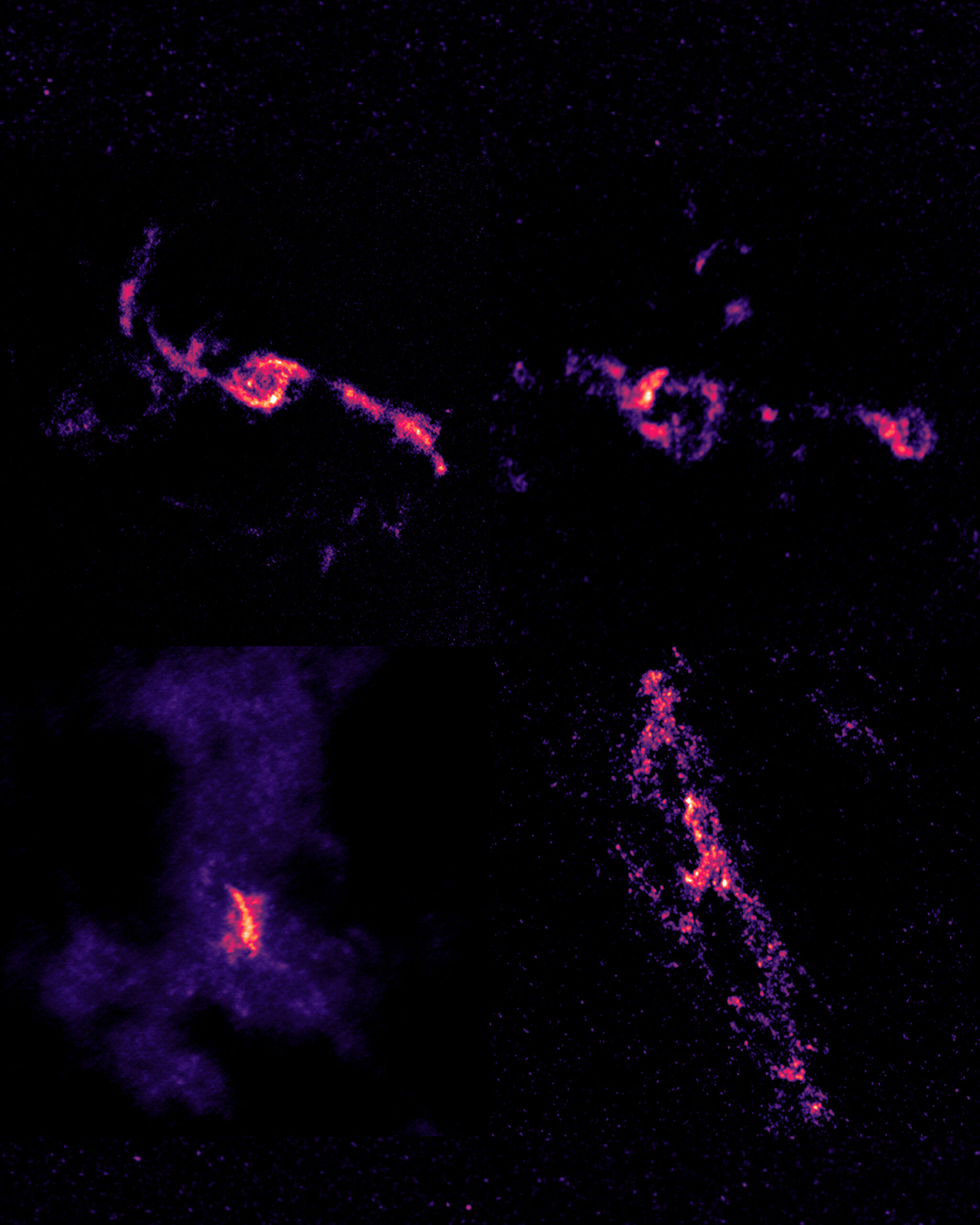 Publicado el: 22/12/2025International study reveals that black holes feed selectively
Publicado el: 22/12/2025International study reveals that black holes feed selectively -
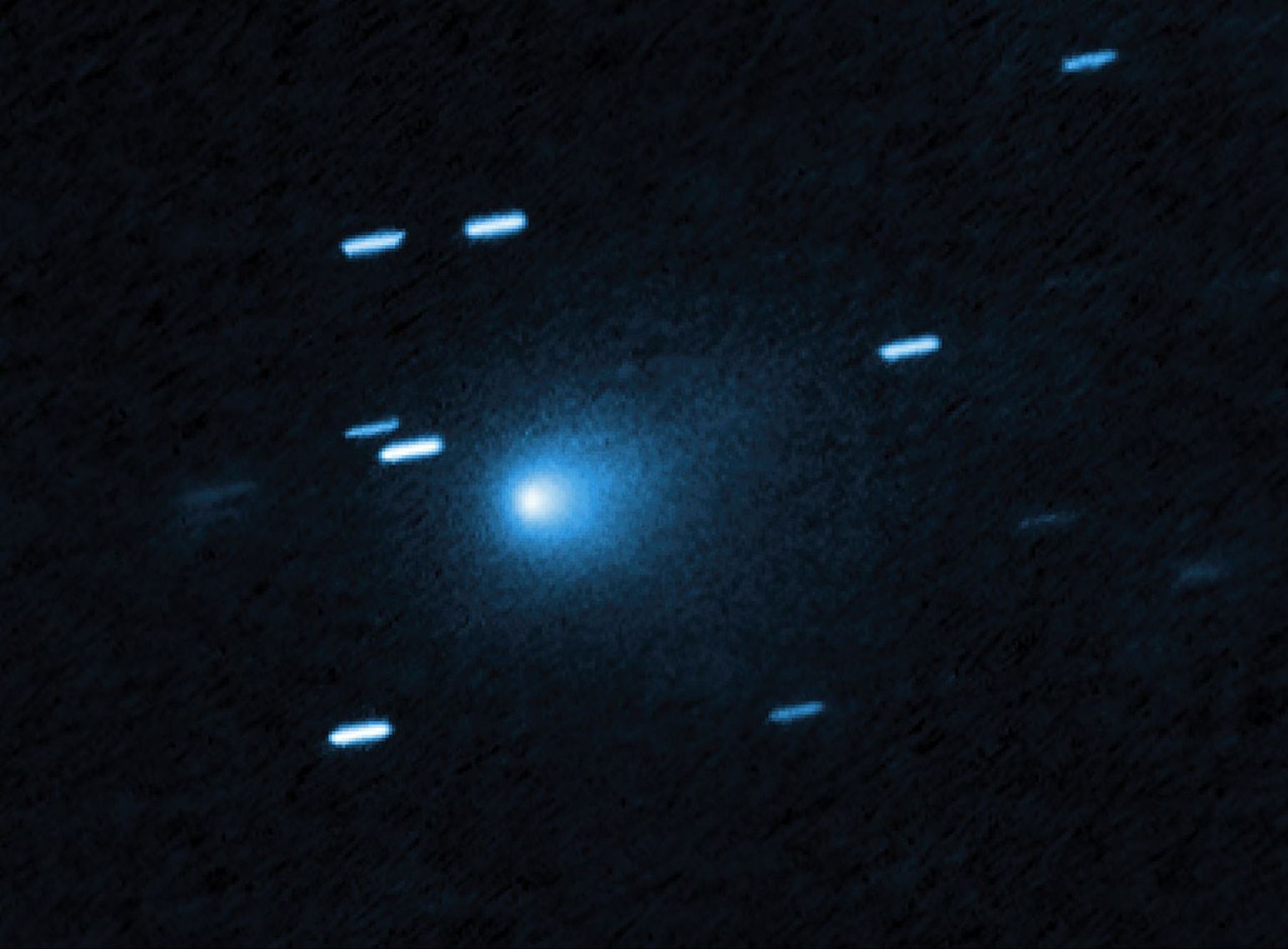 Publicado el: 20/12/20253I/ATLAS: the interstellar comet approaching Earth and what is known about it
Publicado el: 20/12/20253I/ATLAS: the interstellar comet approaching Earth and what is known about it -
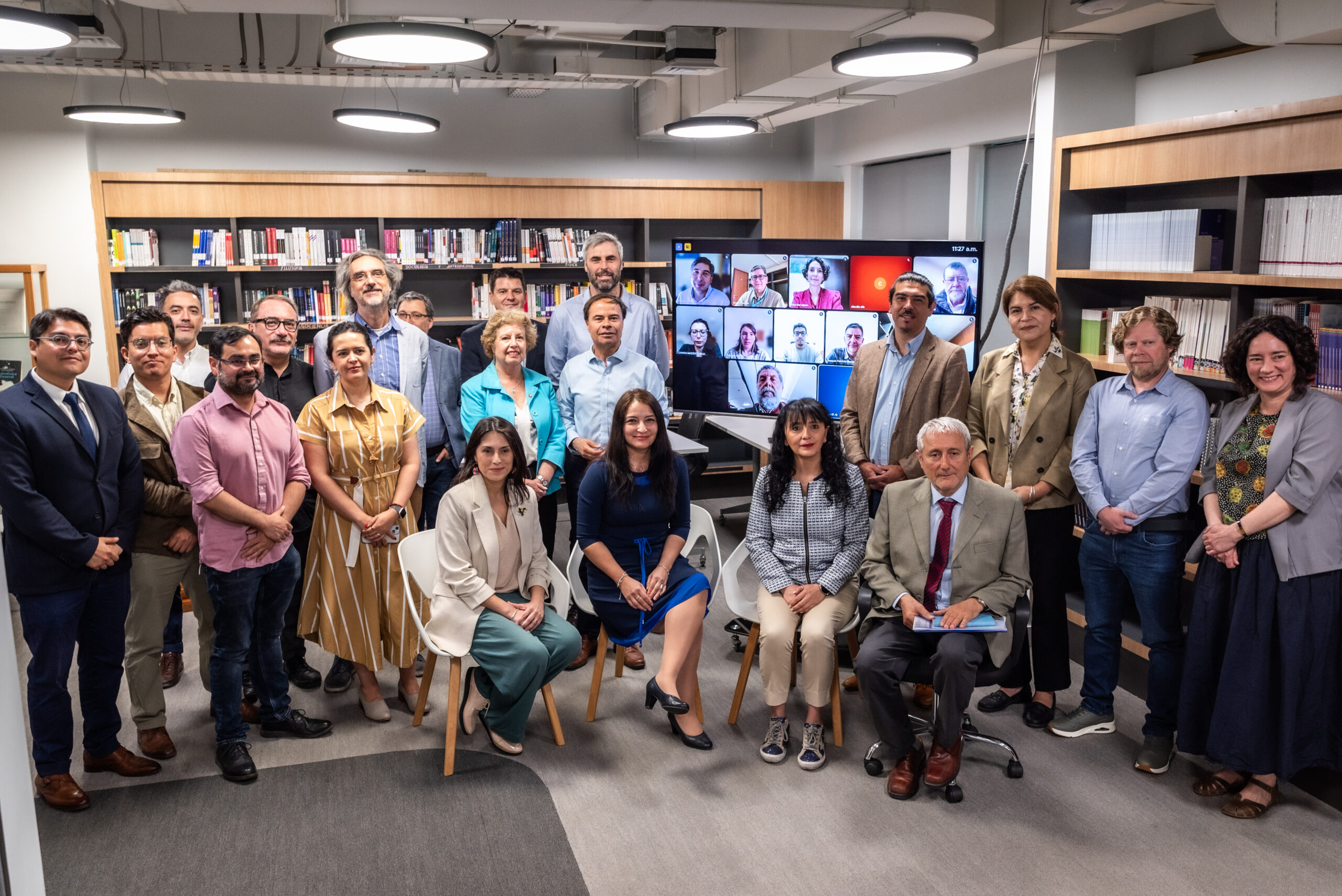 Publicado el: 18/12/2025Ministerial Advisory Committee for Astronomical Observation submits its final report
Publicado el: 18/12/2025Ministerial Advisory Committee for Astronomical Observation submits its final report -
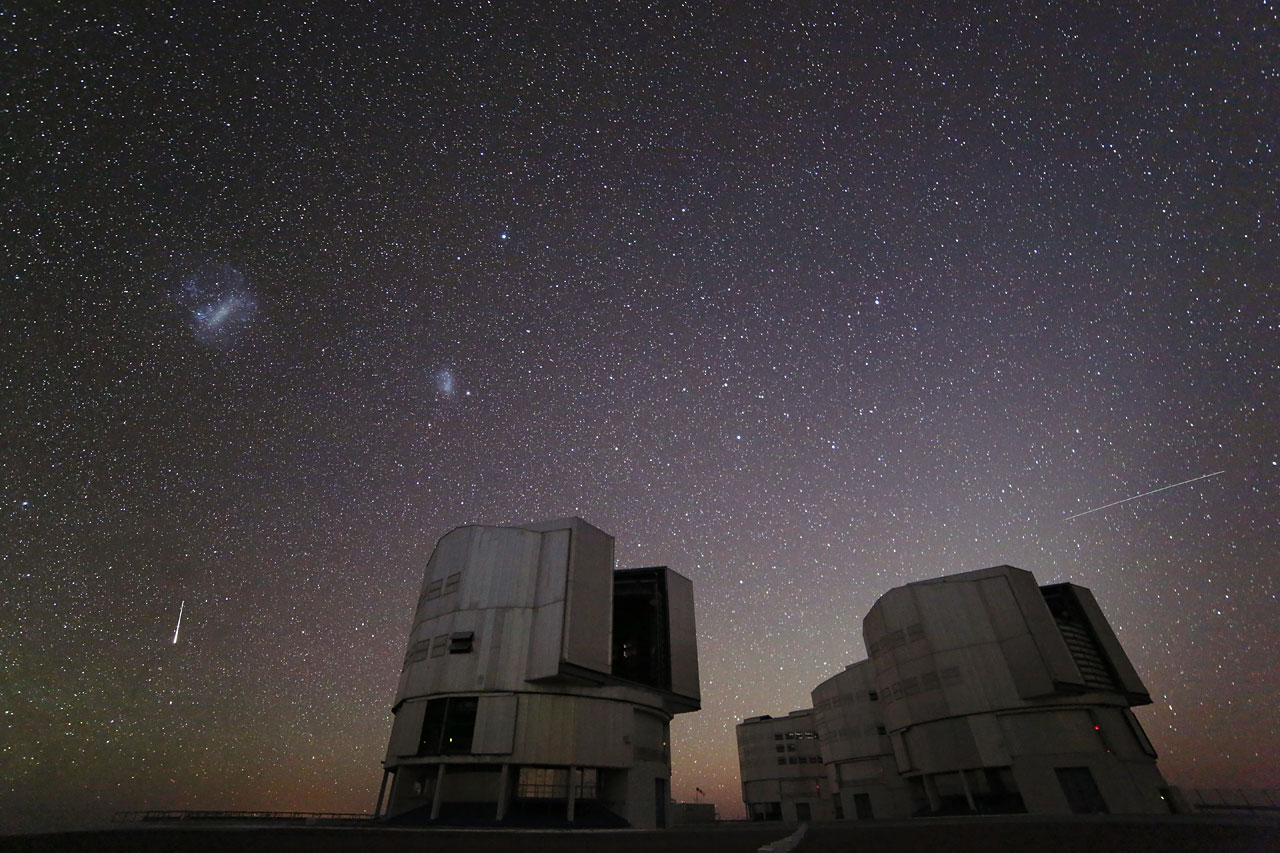 Publicado el: 13/12/2025Geminids 2025: facts and how to observe the last meteor shower of the year
Publicado el: 13/12/2025Geminids 2025: facts and how to observe the last meteor shower of the year -
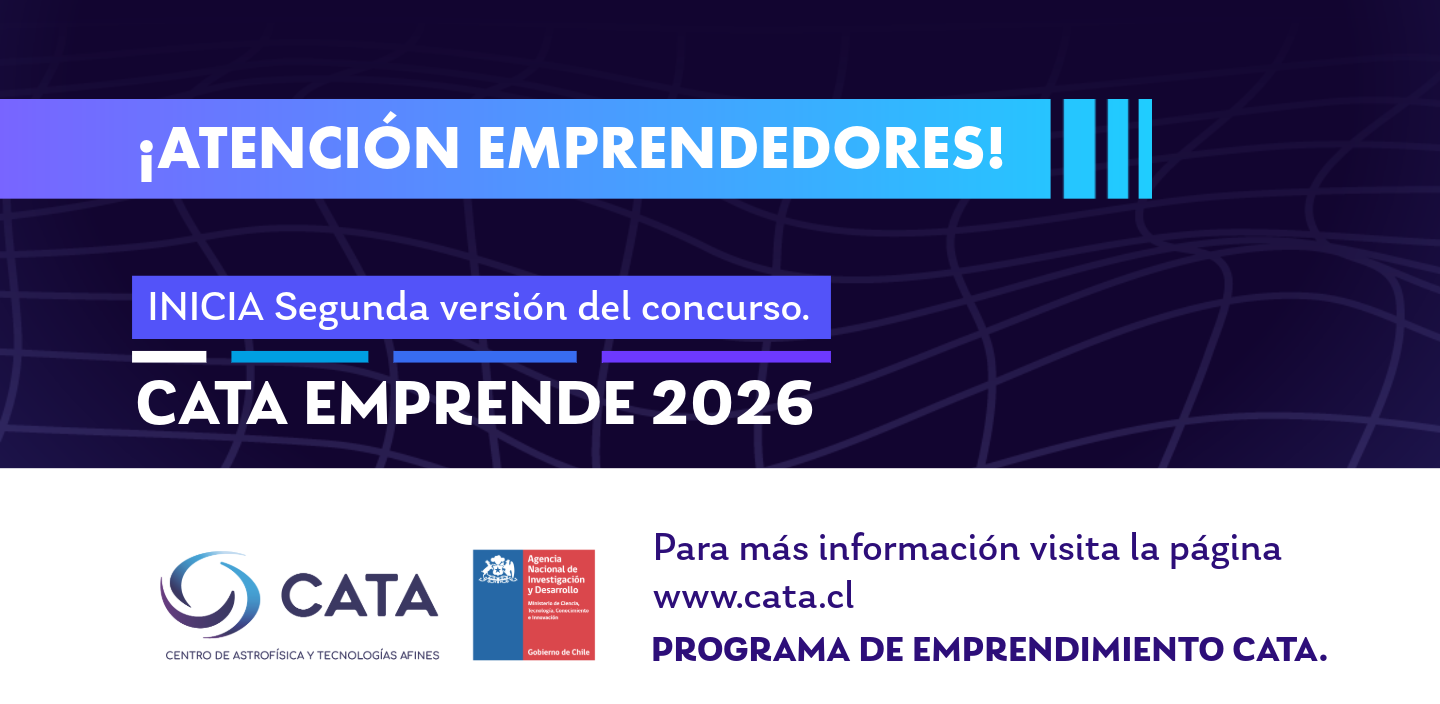 Publicado el: 12/12/2025Call for applications for the CATA Emprende 2026 program now open
Publicado el: 12/12/2025Call for applications for the CATA Emprende 2026 program now open
Categories list
- Acknowledgments 21
- Astrobiology 6
- AstroCluster 1
- Black holes 20
- Corporativo 58
- Cosmology 5
- Descubrimientos 23
- Disclosure 74
- Exoplanets 14
- Extension 7
- Galaxies 22
- Galaxies formation 6
- Inter y Transdisciplina 4
- Local Universe 17
- Publications 6
- Sin categorizar 34
- Solar System 23
- Stellar formation 8
- Technology 16
- Technology Transfer 18
